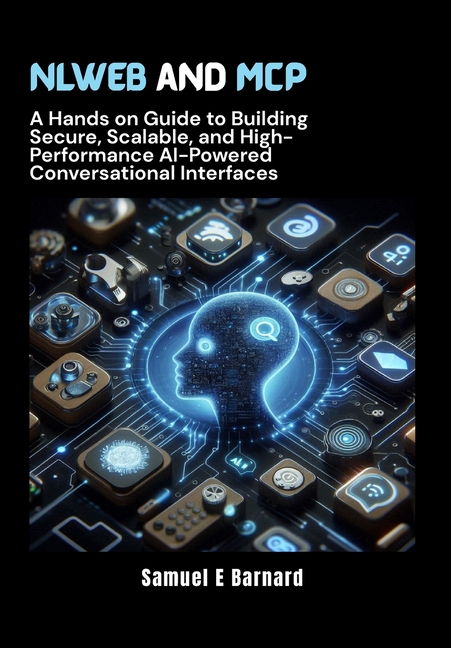Description
Build scalable, secure, and intelligent chatbots and voice assistants using NLWeb's advanced natural language understanding (NLU) platform and MCP's robust delivery pipeline. This guide walks you through designing, building, testing, deploying, and iterating on AI-driven conversational systems that perform reliably across web, mobile, and voice channels. Real-world examples and best practices help you deliver bots that delight users and meet enterprise demands.
What You'll Learn
Project Foundations & Starter Kit
- Structure Git workflows, lock dependencies, and enforce commit standards
- Use NLWeb templates and MCP configuration to bootstrap a starter bot
- Set up local environments with secret management, logging, and environment-specific settings
Custom Language Model Training
- Collect and anonymize real user utterances
- Define annotation guidelines and label intents/entities consistently
- Train models using BiLSTM, CNN, or transformer architectures
- Evaluate with precision, recall, and F1-score, and iterate on edge cases
Extending the NLU Pipeline
- Normalize casing, expand abbreviations, and correct typos
- Tokenize structured inputs like serial numbers or codes
- Extract structured data and adjust confidence scores with postprocessors
Stateful Dialogue Management
- Use state machines for slot filling, confirmations, and follow-ups
- Handle interruptions with a context stack
- Persist sessions in Redis and manage expiry
- Implement error handlers and escalation paths to human agents
Testing, Debugging & CI/CD
- Write unit tests for classification and validation logic
- Create integration tests with mocked services
- Script end-to-end flows using Botium, Cypress, or Playwright
- Automate pipelines with GitHub Actions, Azure Pipelines, or Jenkins
Multi-Channel Deployment
- Configure web chat widgets and mobile SDKs
- Use adapters for Alexa and Google Assistant
- Implement OAuth2 with JWT propagation
- Automate deployments with MCP CLI using canary or blue/green strategies
Security & Compliance
- Validate inputs, sanitize data, and use parameterized queries
- Perform STRIDE threat modeling and apply OAuth2, PKCE, JWT, and HMAC
- Ensure GDPR, HIPAA, and PCI DSS compliance through encryption, access control, and audit trails
Performance & Scaling
- Cache NLU results and session context
- Use Kubernetes or cloud auto-scaling
- Optimize code and network settings
- Adopt asynchronous, event-driven patterns with queues and pub/sub
Observability & Operations
- Use Prometheus and OpenTelemetry for metrics and tracing
- Centralize logs in Elasticsearch, Loki, or Datadog
- Build dashboards and alerts for SLA monitoring
- Collect user feedback via surveys, transcripts, and A/B tests
Post-Deployment Validation & Iteration
- Run smoke tests after releases
- Monitor telemetry and review transcripts
- A/B test dialogue variations and model updates
- Use feature flags to roll out improvements incrementally
Who This Book Is For
- Backend and full-stack engineers building NLU and dialogue systems
- DevOps and SRE teams managing CI/CD and reliability
- NLP engineers training and tuning models
- Architects and leads enforcing secure, scalable practices
- Product owners and compliance officers ensuring regulatory adherence
Ready to Build? Grab a copy now!
Product Details
- Jul 9, 2025 Pub Date:
- 9798291875452 ISBN-10:
- 9798291875452 ISBN-13:
- English Language




